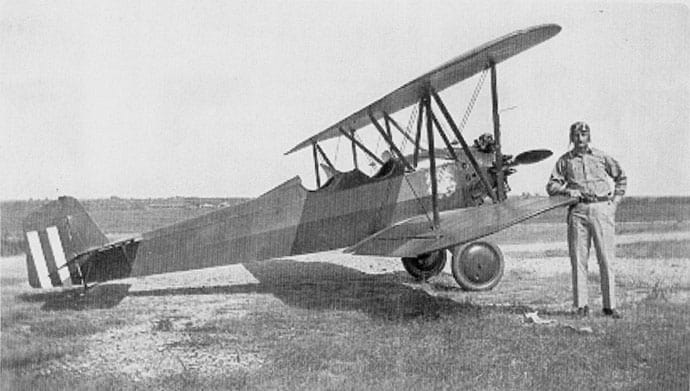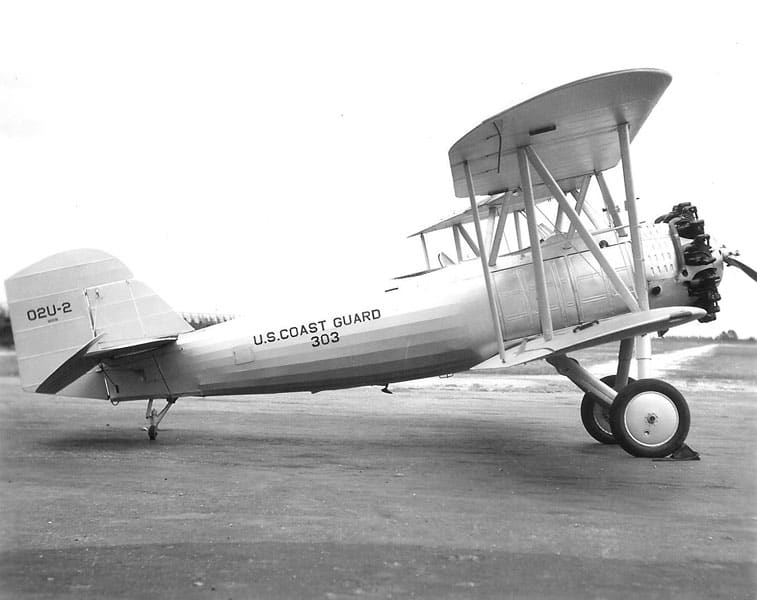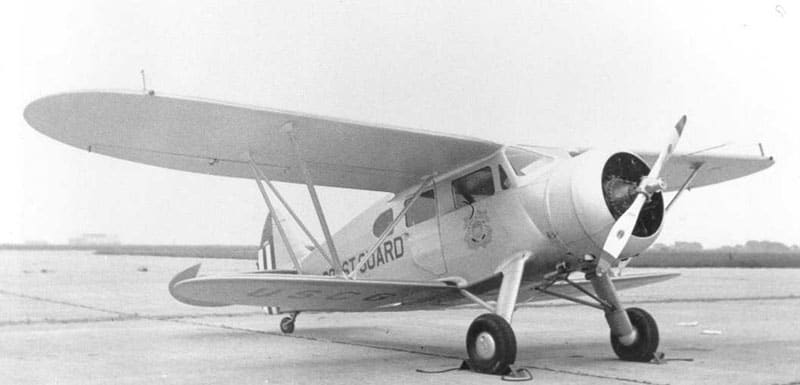In the early 1930s Prohibition had been the law of the land for over 10 years. The Coast Guard was heavily involved in maritime interdiction and the Customs Service and Border Patrol had the enormous task of combating the smuggling of alcohol, illegal aliens and drugs along 5900 miles of open border. Prohibition was repealed on December 5, 1933 but seven states remained “dry” and the others were allowed local-option. In Texas 242 of the existing 252 counties remained “dry”. Liquor distribution was government controlled and excise and local taxes equated to a little over one-third the purchase cost. Thus liquor smuggling remained extremely profitable and illegal alien and drug smuggling remained unaffected by the repeal of Prohibition.
On the Mexican border especially, communications were primitive and communities were isolated centers connected by dirt roads and a few railroads through a vast expanse of harsh terrain. Local Border Patrol and Customs officials realized that aircraft flying patrols would be of significant benefit. The problem was that neither agency had aircraft or the money to operate them. The smugglers themselves provided the solution. Some smugglers utilized aircraft to carry out their operations and one by one Customs seized these aircraft. Before long Custom officials in Texas had created their own ad-hoc “Air Force” composed of a rag-tag collection of confiscated airplanes. No money was provided for their operation and their use was officially discouraged by Washington. But the locals were undaunted and with the assistance of the U.S. Army at Dodd Field, Fort Sam Houston, near San Antonio, Texas, obsolete parts, materials and an old hangar were obtained. That they were able to fly the aircraft at all is amazing; but fly they did and they were extremely effective in stemming major smuggling activities. In fact so effective that Washington could no longer ignore the operation.
Secretary of the Treasury, Henry Morgenthau, who was favorably disposed toward aviation, provided the solution. He directed that all

flying activities of the Treasury Department be consolidated under the cognizance of one organization and he determined that to be the US Coast Guard. The Coast Guard had a cadre of trained pilots and maintenance personnel; access to well qualified training programs and was presently engaged in the expansion of its aviation program. No doubt this was a blow to the individuals that had created this special “Air Force” but the blow was mitigated by the induction of four of the Custom pilots into the Coast Guard as Chief Petty Officer Aviation Pilots.
On March 9, 1934 all air operations of the U.S. Customs were transferred to the Coast Guard. Air Detachments at Buffalo, New York, San Diego, California and San Antonio, Texas were established to support Custom operations. A unit of five men commanded by LT Clarence Edge arrived at Dodd Field shortly thereafter. LT Elmer Stone commanded the San Diego Detachment which was located in one-half of a commercial hangar located at Lindbergh Field. Available information on the Buffalo Air Detachment, other than LT N.M. Nelson was the commanding Officer, is extremely limited.
Transferred to the Coast Guard were 15 additional aircraft seized over the previous few years. Official records are not clear on exactly what these aircraft were, it is believed that in the mix was two Curtiss Falcons, two Curtiss, Robins, a Douglass Mailwing, two New Standards, a Pilgrim, a Command-Aire 5C3, a Sikorsky S39 and two Waco 10s. While on paper this would look good in reality most of the aircraft were in extremely poor condition and unsuitable. Eventually all were replaced except for the two New Standards. During 1934-1935 six Vought O2U-2 model aircraft were purchased by the U.S. Navy on behalf of the Coast Guard and four were utilized for the aerial patrol.
At the end of a year operations were transferred to Del Rio, Texas. This placed the Detachment on the border within the area of patrol and made the operation much more effective. The Detachment operated from the commercial airfield and relied upon American Airlines facilities and assistance. Coast Guard Headquarters, much to the pleasure of the city of El Paso, ordered the relocation of the Detachment to Biggs Field, Fort Bliss Texas in December of 1936. After an amazing chain of endorsements including the Treasury Department, War Department, Army Eighth Corps Fort Sam Houston, Chief of Staff US Army Signal Corp, and the Commanding Officer of the Air Corps Detachment at Fort Bliss, the Coast Guard Air Patrol took up residence in a small hangar at Biggs Field in February 1937. Biggs Field was able to provide better support and El Paso was in fact more centrally located within the operating area. Working in tandem with the Border Patrol, Coast Guard aircraft patrolled the border looking for smugglers and illegal aliens crossing the border in remote areas. The tendency to raise dust when transiting the terrain made it easier to spot a stray vehicle or groups of people or cattle which would be reported to the Border Patrol for interception. The smuggling of cattle had become lucrative because of an import tax imposed by the U.S. government and an export tax levied by the Mexican Government. For those wishing to avoid paying taxes, the remoteness of the border also made a prime location for hidden stills.
The clear air allowed for easy spotting of other aircraft at great distances. At times the Coast Guard aircraft would spot aircraft coming across the border and force them to land for inspections. The Coast Guard crews carried side-arms and a Thompson sub-machine gun. If signaling did not get the desired response –showing the Thompson usually clarified the message. There were also the more traditional missions that the crews performed such as medical evacuations and searching for people lost in the wilderness.
During March of 1937 the Coast Guard procured three cabin model Waco biplanes designated J2W-1. They were versatile and could be used as a landplane or fitted with floats or skis. They were intended to be put on board cutters and used for operations such as the Bering Sea Patrol. The V-159 was based on the USCG Cutter Spencer home-ported out of Cordova, Alaska during 1937. Eventually the J2Ws were all assigned to the Air Patrol detachment at El Paso.
At the end of 1939 it was decided to close the El Paso Air Detachment. The three J2Ws had been lost to accidents during the year and Officers and men were assigned other units. The San Diego Detachment had become an air station and Buffalo had been closed. The official reason sited for closing the detachment was a decrease in smuggling but in truth world events were overtaking the remote border patrols. The President had invoked the Neutrality Law in September 1939 and the assets were needed elsewhere.
Vought O2U-2 Corsair

Manufactured by Vought aircraft it had a wing span of 34 ft-6 in and a length of 24 ft 6 in. It was powered by a Pratt & Whitney R-1340-88 delivering 450 horsepower at take-off. The propeller was standard steel fixed blade. It cruised at 90 mph with a top speed of 147 mph. Fuel capacity was 110 gal giving a range of 450 miles. Maximum weight was 3703 pounds and the O2U-2 had a service ceiling of 20,100 feet. Three were procured in 1934 and three in 1935. One was decommissioned in 1935. Four were surveyed in 1937 and the last was decommissioned in 1940.
WACO J2W-1

Manufactured by Waco aircraft it had a wing span of 35 ft and a length of 25 ft 9 in. It was powered with a Jacobs L-4 R-755 engine developing 225 horsepower at take-off. The propeller was a Hamilton Standard –two position. The aircraft cruised at 140 mph with a top speed of 159 mph. It carried 70 gal of fuel giving a range of 600 miles. It had a crew of two and carried three passengers. Maximum weight was 3350 pounds and it had a service ceiling of 16,000 ft. Three were procured in 1937. All were lost to crashes in 1939.

